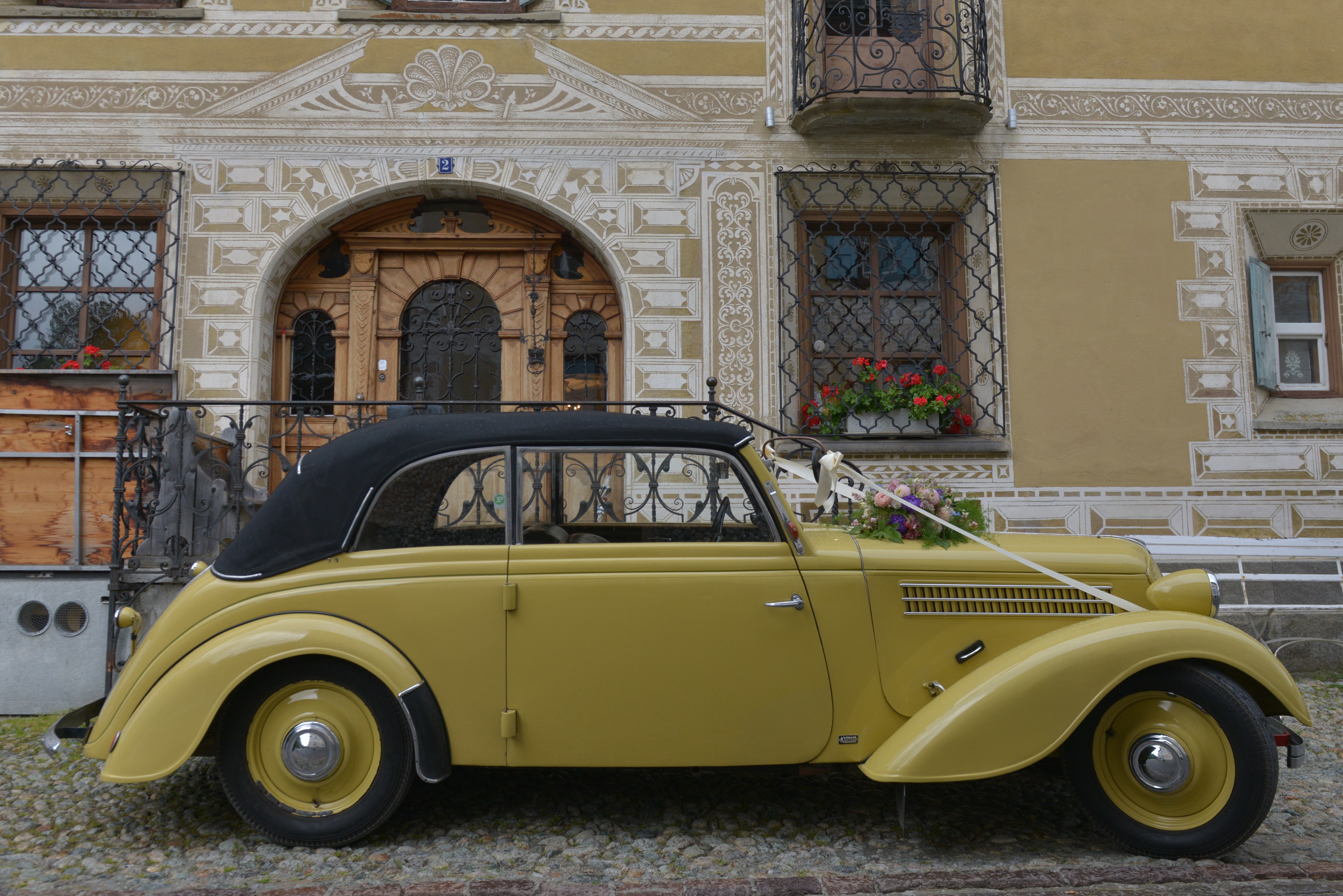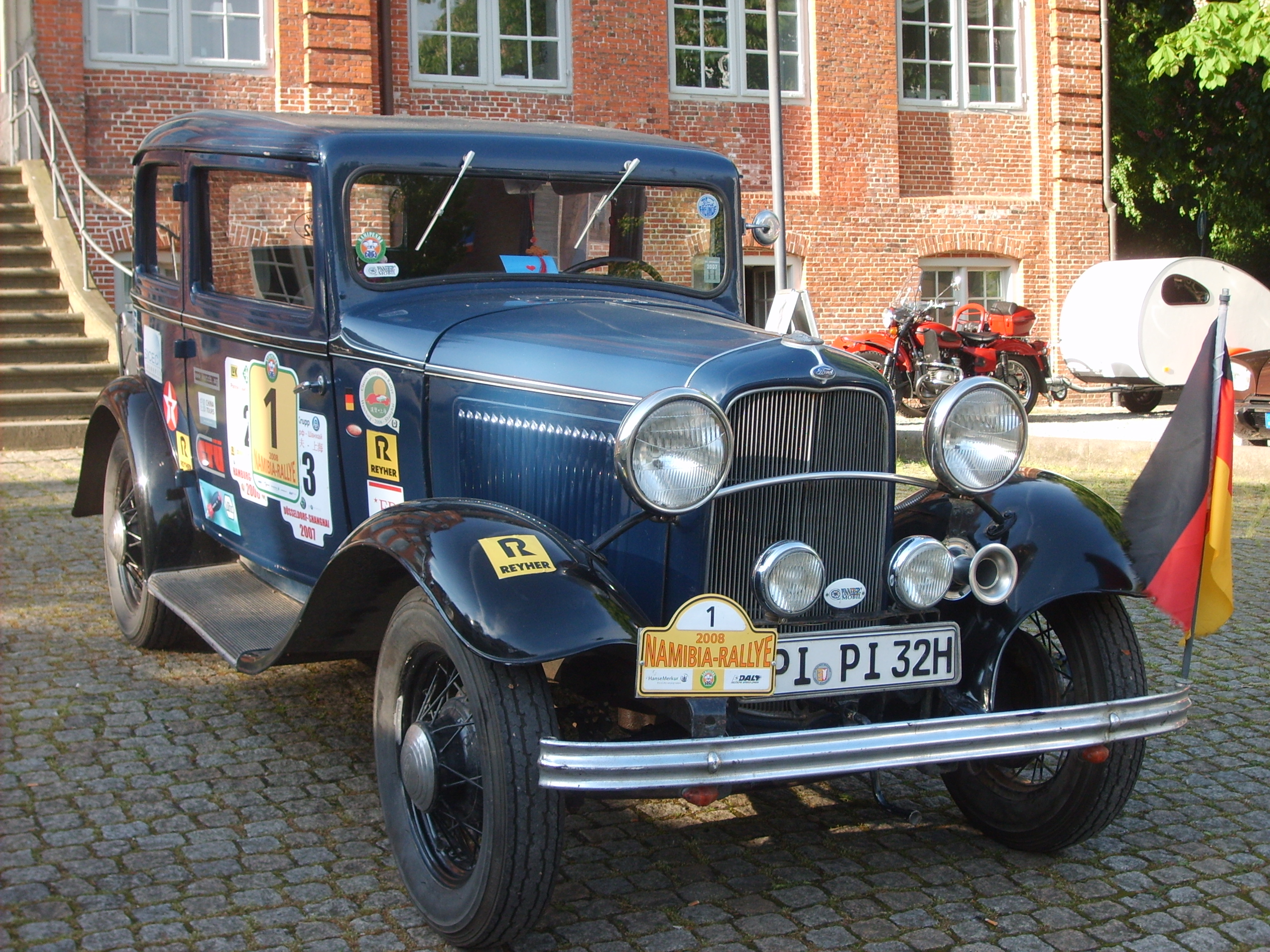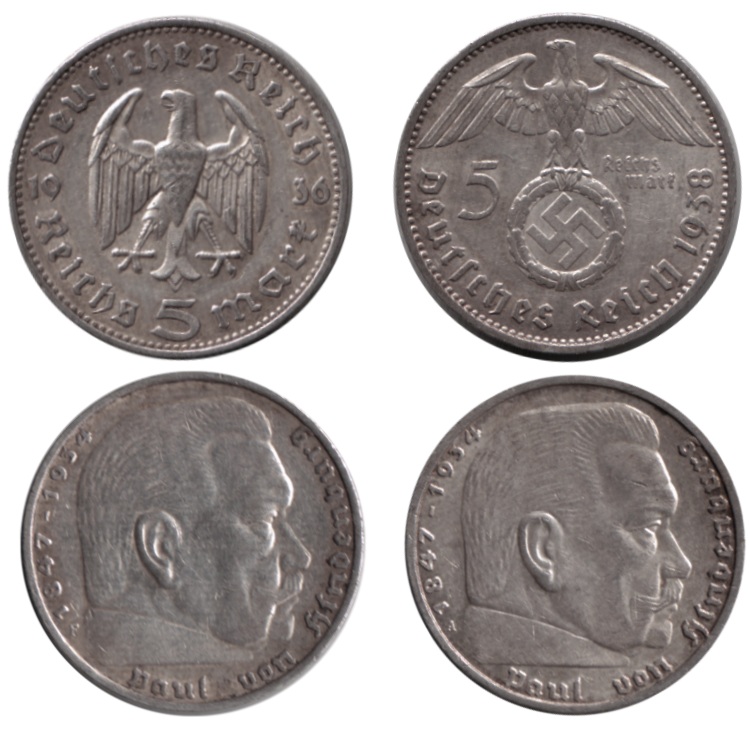|
Adler Trumpf
The Adler Trumpf is a small family car introduced by the Frankfurt based auto-maker, Adler in March 1932, though Trumpf production only got under way in the late summer of that year.Oswald, p 19 In a move reminiscent of British Leyland in the 1970s, Adler launched two similarly sized cars in the same year, one of which followed the then new trend set by DKW for front-wheel drive, and one employing the conventional rear-wheel drive configuration still used by the market leader, Opel. The Trumpf was the second of these two smaller Adlers to enter volume production, at the end of the Summer in 1932, and was the front wheel drive offering. The innovative design was the responsibility of Hans Gustav Röhr (1895 – 1937).Oswald, p 19 The Trumpf was distinguished from its more conservatively configured Primus sibling both by its front wheel drive and by its relatively advanced independent suspension. Engine At launch the car was offered with a four cylinder 1,504 cc engine fo ... [...More Info...] [...Related Items...] OR: [Wikipedia] [Google] [Baidu] |
Adler (automobile)
Adler was a German automobile and motorcycle manufacturer from 1900 until 1957. The'' 'Adler' '' name is German for 'eagle'. History The Adler factory produced bicycles, typewriters, motorcycles and calculators in addition to cars. Before World War I, the company used De Dion two- and four-cylinder engines in cars that ranged from 1032 cc to 9081 cc; beginning in 1902 (the year Edmund Rumpler became technical director), they used their own engines as well. These cars, driven by Erwin Kleyer and Otto Kleyer (sons of the company founder Heinrich Kleyer) and by Alfred Theves won many sporting events. In the 1920s, Karl Irion raced many Adlers; popular models of the period included the 2298 cc, 1550 cc, and 4700 cc four-cylinders and the 2580 cc six-cylinders. A few of the Standard models, built between 1927 and 1934, featured Gropius-designed coachwork. The Adler Standard 6, which entered volume production in 1927, had a 2540 cc or 2916 cc six-cylinder engine, while the Adler ... [...More Info...] [...Related Items...] OR: [Wikipedia] [Google] [Baidu] |
Ambi-Budd
Ambi-Budd was a German automobile body company founded by Edward Gowen Budd In Germany, Edward Gowen Budd worked with Arthur Müller and set up a steel pressing plant ''Ambi Budd Presswerke'' (ABP) in the old Rumpler factory and became a successful supplier of pressed-steel components. "Ambi" stood for "''Arthur Müller Bauten und Industriewerke''". Budd Philadelphia U.S. owned 26% of the Adler stock and were located next door to the German assembly plant for American associate Chrysler. Budd supplied bodies for early BMWs as well as German Fords. In 1943, the company had to move production underground due to bomb attacks from the allied air forces. They also made parts for the Focke Wulf fighter, jerrycans, and bodies for the Volkswagen ''Kübelwagen'' and ''Schwimmwagen'' light vehicles. The Berlin plants were completely destroyed by bombing during World War II. After the war, the Budd plant ended up in the Soviet sector. The machines and tools were dismantled and most of ... [...More Info...] [...Related Items...] OR: [Wikipedia] [Google] [Baidu] |
Adler Vehicles
Adler may refer to: Places *Adler, Alabama, an unincorporated community in Perry County *Adler Planetarium, Chicago, Illinois, USA *Adler Township, Nelson County, North Dakota, USA *Adler University, formerly Adler School of Professional Psychology, in Chicago, Illinois, USA *Adlersky City District, Sochi, Russia **Adler Microdistrict, a resort in Sochi, Russia **Adler railway station, a station serving the city Sports *Adler Mannheim, a German ice hockey team *Berlin Adler, an American football team in Berlin *Nickname of the sports club Eintracht Frankfurt *Nickname for the Germany national football team Transportation *, a number of steamships *Adler (cars and motorcycle), an early 20th-century automobile. The firm also produced typewriters and other office equipment. *Adler (locomotive), the first German steam locomotive (1835) *Adler or Adlerwerke vorm. Heinrich Kleyer, a German aircraft manufacturer Other uses *Adler (band), an American rock band *Adler (comics), a Franc ... [...More Info...] [...Related Items...] OR: [Wikipedia] [Google] [Baidu] |
Cars Introduced In 1932
A car or automobile is a motor vehicle with wheels. Most definitions of ''cars'' say that they run primarily on roads, seat one to eight people, have four wheels, and mainly transport people instead of goods. The year 1886 is regarded as the birth year of the car, when German inventor Carl Benz patented his Benz Patent-Motorwagen. Cars became widely available during the 20th century. One of the first cars affordable by the masses was the 1908 Model T, an American car manufactured by the Ford Motor Company. Cars were rapidly adopted in the US, where they replaced animal-drawn carriages and carts. In Europe and other parts of the world, demand for automobiles did not increase until after World War II. The car is considered an essential part of the developed economy. Cars have controls for driving, parking, passenger comfort, and a variety of lights. Over the decades, additional features and controls have been added to vehicles, making them progressively more complex. These i ... [...More Info...] [...Related Items...] OR: [Wikipedia] [Google] [Baidu] |
Ford Germany
Ford-Werke GmbH is a German car manufacturer headquartered in Niehl, Cologne, North Rhine-Westphalia. It is a subsidiary of Ford Motor Company, which operates two large manufacturing facilities in Germany, a plant in Cologne and a plant in Saarlouis. Berlin origins The earliest presence of the Ford Motor Company in Germany was a parts operation set up in Hamburg in 1912. At the end of 1924 the US Ford Motor Company established a sales office in Berlin which at the start of 1925 received a permit to import 1,000 tractors. In 1920 the government had imposed a tariff so high that it amounted to a prohibition against importing foreign automobiles, but this was reversed in October 1925. The move had evidently been anticipated by Ford, since on 18 August 1925 the ''Ford Motor Company Aktiengesellschaft'' had been entered in the Berlin Companies Register.Oswald, p 411 During 1925 an assembly plant was constructed in a rented warehouse in the Westhafen (western port) district of ... [...More Info...] [...Related Items...] OR: [Wikipedia] [Google] [Baidu] |
Osnabrück
Osnabrück (; wep, Ossenbrügge; archaic ''Osnaburg'') is a city in the German state of Lower Saxony. It is situated on the river Hase in a valley penned between the Wiehen Hills and the northern tip of the Teutoburg Forest. With a population of 168,145 Osnabrück is one of the four largest cities in Lower Saxony. The city is the centrepoint of the Osnabrück Land region as well as the District of Osnabrück.Osnabrück: Lebendiges Zentrum im Osnabrücker Land www.osnabruecker-land.de The founding of Osnabrück was linked to its positioning on important European trading routes. |
Karmann
Wilhelm Karmann GmbH, commonly known as simply Karmann, was a German automobile manufacturer and contract manufacturer based in Osnabrück. Founded by Wilhelm Karmann in 1901, the company specialized in a variety of automotive roles, including design, production and assembly of components for a wide variety of automobile manufacturers, including Chrysler, Porsche, Mercedes-Benz and Volkswagen Group. The company was broken up in 2010, after filing for bankruptcy the previous year. Its convertible roof components were purchased by Webasto, Magna Steyr, and Valmet Automotive— while the Osnabrück assembly plant, vehicle development, tools, and assembly systems were transferred to Volkswagen. History Karmann was established in 1901 when Wilhelm Karmann purchased Klages, a coachbuilder founded in 1874, and renamed the business. The company then grew together with the expanding automobile industry. Karmann became known for its work on convertibles, coupés, and other niche model ... [...More Info...] [...Related Items...] OR: [Wikipedia] [Google] [Baidu] |
Adler Trumpf 1
Adler may refer to: Places * Adler, Alabama, an unincorporated community in Perry County * Adler Planetarium, Chicago, Illinois, USA * Adler Township, Nelson County, North Dakota, USA * Adler University, formerly Adler School of Professional Psychology, in Chicago, Illinois, USA * Adlersky City District, Sochi, Russia **Adler Microdistrict, a resort in Sochi, Russia ** Adler railway station, a station serving the city Sports *Adler Mannheim, a German ice hockey team * Berlin Adler, an American football team in Berlin *Nickname of the sports club Eintracht Frankfurt *Nickname for the Germany national football team Transportation *, a number of steamships * Adler (cars and motorcycle), an early 20th-century automobile. The firm also produced typewriters and other office equipment. * Adler (locomotive), the first German steam locomotive (1835) *Adler or Adlerwerke vorm. Heinrich Kleyer Adler or Adlerwerke vormal ..., a German aircraft manufacturer Other uses * Adler (band), an ... [...More Info...] [...Related Items...] OR: [Wikipedia] [Google] [Baidu] |
Adler Trumpf Junior
The Adler Trumpf Junior is a small family car introduced by the Frankfurt based auto-maker, Adler early in 1934. The Adler Trumpf had by now been available for two years, and the Trumpf Junior was conceived as a similar but smaller car which would broaden the range and claim a share of a growing market which DKW were creating with their F1 model, and its successors, for small inexpensive front wheel drive cars. The Trumpf Junior's development was a shared responsibility between Hans Gustav Röhr (1895 – 1937) and his colleague and friend, Adler chief engineer Josef Dauben . Oswald, p 26 The engine The engine was a four-cylinder four stroke 995 cc side-valve unit. Claimed maximum power was of at 4,000 rpm. This supported a claimed top speed of 90 km/h (56 mph). Power was delivered to the front wheels via a four speed manual transmission controlled by means of a column mounted lever. The bodies When launched at the start of 1934 the car came with a choice bet ... [...More Info...] [...Related Items...] OR: [Wikipedia] [Google] [Baidu] |
Reichsmark
The (; sign: ℛℳ; abbreviation: RM) was the currency of Germany from 1924 until 20 June 1948 in West Germany, where it was replaced with the , and until 23 June 1948 in East Germany, where it was replaced by the East German mark. The Reichsmark was subdivided into 100 s (Rpf or ℛ₰). The Mark is an ancient Germanic weight measure, traditionally a half pound, later used for several coins; whereas (''realm'' in English), comes from the official name for the German state from 1871 to 1945, . History The Reichsmark was introduced in 1924 as a permanent replacement for the Papiermark. This was necessary due to the 1920s German inflation which had reached its peak in 1923. The exchange rate between the old Papiermark and the Reichsmark was = 1012 ℳ (one trillion in American English and French, one billion in German and other European languages and British English of the time; see long and short scale). To stabilize the economy and to smooth the transition, the Papierm ... [...More Info...] [...Related Items...] OR: [Wikipedia] [Google] [Baidu] |
Berlin
Berlin ( , ) is the capital and largest city of Germany by both area and population. Its 3.7 million inhabitants make it the European Union's most populous city, according to population within city limits. One of Germany's sixteen constituent states, Berlin is surrounded by the State of Brandenburg and contiguous with Potsdam, Brandenburg's capital. Berlin's urban area, which has a population of around 4.5 million, is the second most populous urban area in Germany after the Ruhr. The Berlin-Brandenburg capital region has around 6.2 million inhabitants and is Germany's third-largest metropolitan region after the Rhine-Ruhr and Rhine-Main regions. Berlin straddles the banks of the Spree, which flows into the Havel (a tributary of the Elbe) in the western borough of Spandau. Among the city's main topographical features are the many lakes in the western and southeastern boroughs formed by the Spree, Havel and Dahme, the largest of which is Lake Müggelsee. Due to its l ... [...More Info...] [...Related Items...] OR: [Wikipedia] [Google] [Baidu] |





_1X7A8063.jpg)

